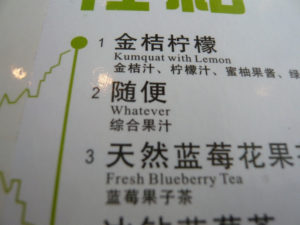China’s lack of an affirmative trademark use requirement allows trademark owners to register marks in more classes and covering more products and services than what they actually sell. This provides a useful tool to brands that want to go after counterfeits. While infringement generally starts with a brand’s core lineup of products, often it quickly moves past that. By registering their trademarks in more classes, brands can ensure that only they get to legally take advantage of new ideas for products and services. For instance, branded cafes might not be a winning idea for fashion brands in their home markets, but they could represent a significant income stream in China.
Moreover, all counterfeits have the potential to harm the brand, even if the brand has no interest in selling them. For example, a brand that prides itself on the craftsmanship of its, say, luxury handbags will not want low-quality shoes and belts bearing its marks. This is particularly the case if the use of their trademark is legal, hence allowing sales to take place more openly and in more reputable channels.
Broader registration also allows the brand to participate in more trademark enforcement actions. Take the luxury handbag brand. Say the authorities raid a warehouse and find thousands of T-shirts bearing the brand’s trademarks. If their registrations include Class 25, the brand will be able to prosecute the matter and inflict harm on the counterfeiter.
To be sure, some would say, why would the brand care, if they are in the handbag business, not the T-shirt one. And indeed there are brands that take that view. But the savvier ones understand that those T-shirts (for which the brands will not get a single jiao), will only help whet appetites for counterfeit bags. Plus, again, the brand might come to realize there is a lucrative opportunity in the clothing space. Surely there is a market in China for ¥5000 bags, but there is a larger one for ¥500 tees.
Also, not doing anything about those T-shirts might send the wrong message to law enforcement. There are brands that do not work cooperatively with the authorities, even when it comes to their core products. In some cases, these brands feel cases involving small seizure amounts are not worth prosecuting. Others just do not bother learning how the system works. Either way, before too long, Chinese officials will lose patience. While these scenarios differ from one where the brand just does not have a registration in the relevant class, failures to cooperate could be misunderstood by officials as reflecting a broader disinterest in enforcement actions. If a brand knows there are going to be regular seizures of a particular product type, they might as well set themselves up to help anti-counterfeiting efforts.
Registering in all 45 classes is not a realistic strategy for most companies, so when devising your China trademark strategy, brands should think creatively about goods and services they might sell one day. In addition, they should anticipate counterfeiters moves and register their trademarks in the classes where they are likely to see products that, while not directly taking market share, could have negative reputational impacts.

























